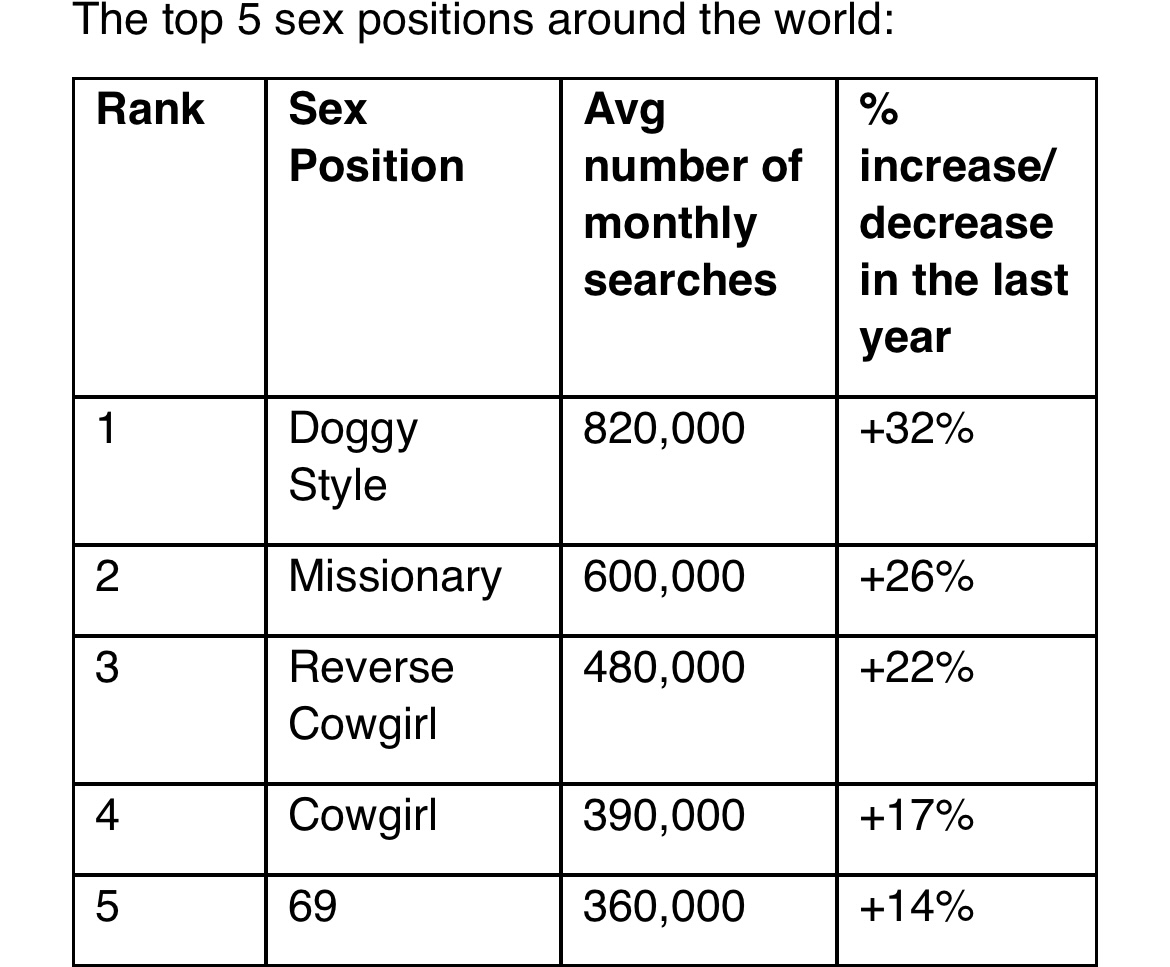The most searched-for sex positions around the globe

Did you know that the world has gone into overdrive searching for the most popular sex positions. But what is each country’s favourite sex position?
Cult Beauty analysed Google search terms to find out what the most-searched sex positions around the world are.
The study reveals that doggy style comes out on top as the world’s most popular sex position right now, with over 820,000 searches on average every month. Whilst missionary, reverse cowgirl and 69 all make the top five most searched sex positions.
Across the world, the doggy style sex position is favourited in Canada, Singapore, Greece and South Africa to name a few!
Yet, in the UK it seems like the Brits are a fan of spicing up their sex life as the most popular sex position is the Reverse Cowgirl, along with Ireland, Norway and Argentina.
The Netherlands played it safe with their favourite position being Missionary, although its neighbours Germany rank doggy style as their number one and France ranked cowgirl as their favourite.
Spain, Turkey and Brazil all choose cowgirl above all others.
Denmark, Belgium and Poland all rank 69 as their favourite sex position.
A spokesperson at Cult Beauty comments on the research findings “sex is one of the most intimate and special acts we partake in and when we find our favourite position that pleasures both people it certainly elevates the experience. It’s great to see such an array of sex positions favourited across the world. If you’re in search of other ways to improve your sexual experience, Cult Beauty has plenty of sex toys to help put your sexual pleasure first.”






